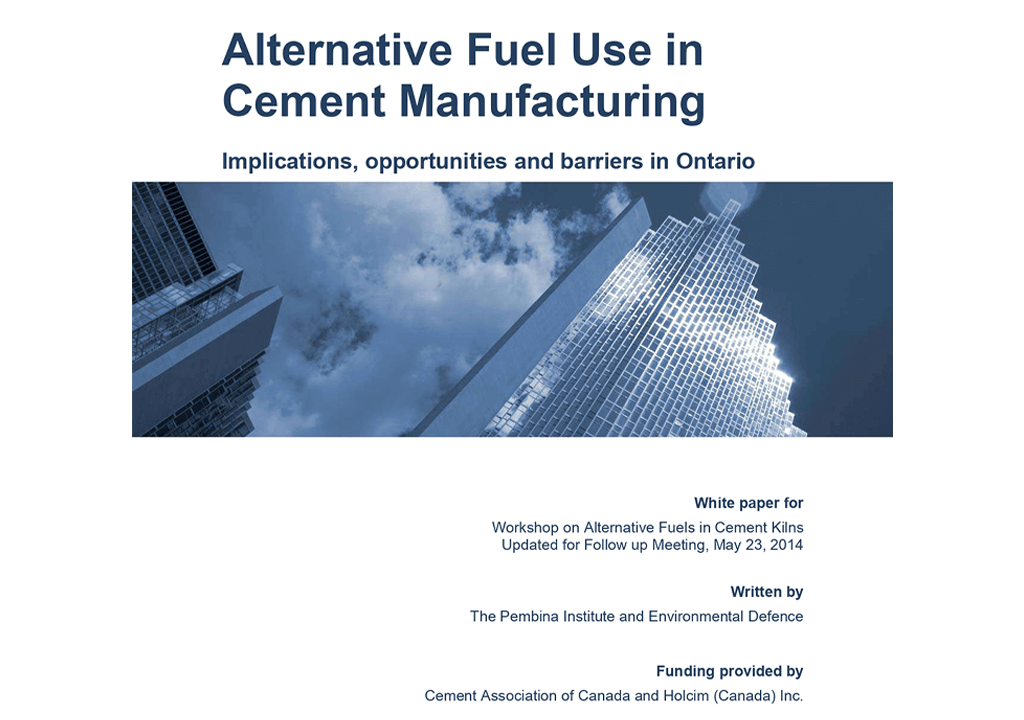Implications, opportunities and barriers in Ontario
White paper for
Workshop on Alternative Fuels in Cement Kilns
Updated for Follow up Meeting, May 23, 2014
Written by
The Pembina Institute and Environmental Defence
Funding provided by
Cement Association of Canada and Holcim (Canada) Inc.
Tackling climate change by reducing greenhouse gas (GHG) emissions is an urgent global
priority. Ontario’s cement sector is looking to do its part to help by seeking opportunities to
reduce their GHG emissions.
Cement manufacturing is a very emissions-intensive process. Approximately half of the emissions come from the chemical reaction that converts limestone into clinker, the active component in cement. Another 40% comes from burning fuel, and the final 10% is split between transportation and electricity. The energy required for the chemical reaction, which occurs at temperatures above 1,400 ̊C, is typically provided by burning coal or petroleum coke, two of the most carbon-intensive fossil fuels.
There are three key levers for reducing emissions from cement manufacturing in the short term: improving thermal and electric energy efficiency, reducing the clinker-to-cement ratio by blending with mineral substitutes, and using lower-carbon alternative fuels to fire the kiln.
Canada’s cement industry has made progress over past two decades in each of these areas.
Energy intensity improved by 21% between 1990 and 2010. There have also been improvements in the clinker-to-cement ratio and the use of alternative fuels is growing. As a result, the overall GHG intensity of cement manufacturing in Canada has decreased by 13%.
However, the immediate opportunities for further progress on efficiency are limited.
Improvements to the clinker-to-cement ratio are largely tied to standards and building codes,
which are outside of the industry’s control.
Replacing coal and petroleum coke with lower-carbon alternative fuels is the most substantial short-term opportunity to reduce GHG emissions from Ontario’s cement sector. Alternative fuels have been successfully used in many other jurisdictions for more than 20 years. Success stories include Quebec and Germany, where substitution rates exceed 30% and 60% respectively.
Increasing fuel substitution in Ontario requires action to address key regulatory barriers and community concerns. To justify the cost associated with modifying a cement facility for use of alternative fuels, Ontario’s regulatory framework needs to provide more clarity on the application process and regulatory requirements.
Individuals, communities and stakeholder organizations are often skeptical of fuel substitution due to community and environmental concerns. Updating the regulatory framework can also give communities greater confidence that these concerns are being addressed.
This white paper seeks to respond to common concerns about fuel substitution, demonstrate its environmental value and open a dialogue on how to move forward in Ontario.
Download the full article

